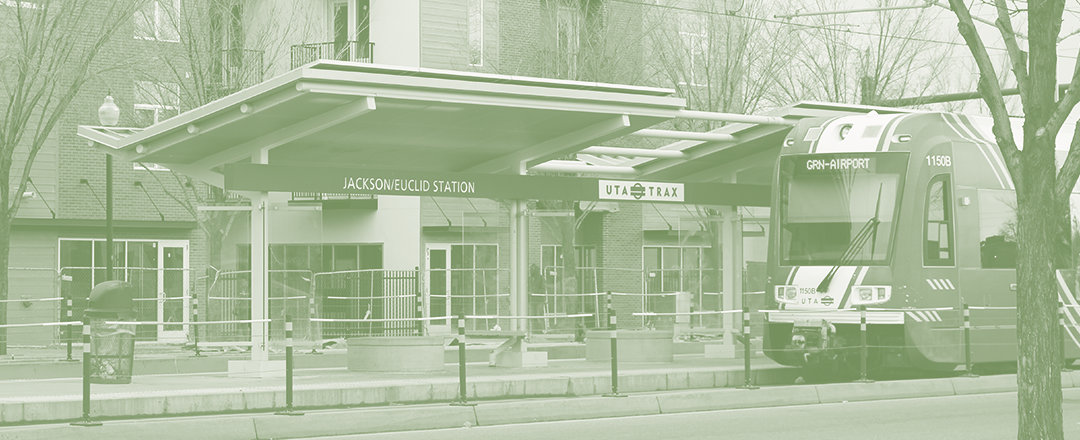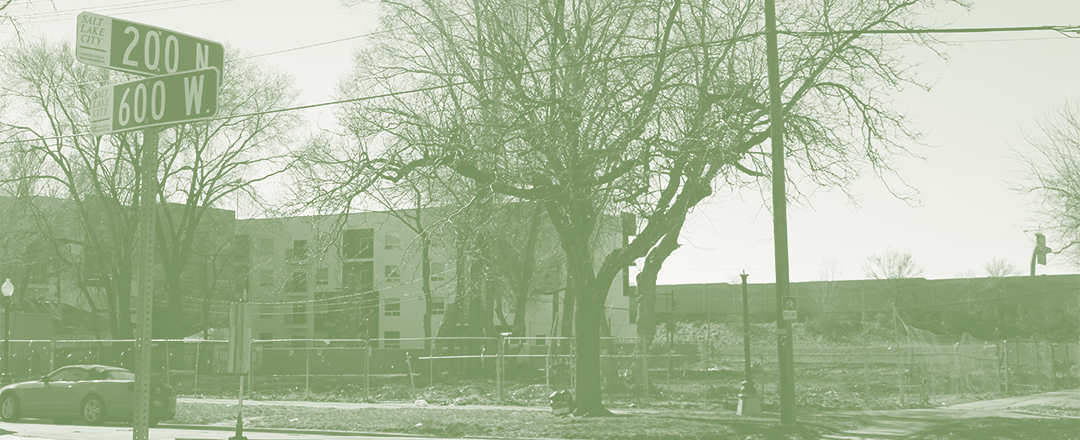 During the George Floyd uprising in the Summer of 2020, the marches through Salt Lake City would often stop on one of the Trax lines downtown with the “organizers” of the march claiming that by disrupting the Trax we were in fact putting a damper on the creation of money (that is value production) in Salt Lake; while the efficacy of attacking capital by sitting on light-rail tracks can and maybe should be questioned, I doubt the organizers speaking through their megaphones knew how right they really were.
During the George Floyd uprising in the Summer of 2020, the marches through Salt Lake City would often stop on one of the Trax lines downtown with the “organizers” of the march claiming that by disrupting the Trax we were in fact putting a damper on the creation of money (that is value production) in Salt Lake; while the efficacy of attacking capital by sitting on light-rail tracks can and maybe should be questioned, I doubt the organizers speaking through their megaphones knew how right they really were.
Despite being a public agency and clearly not being run for profit, the public capital investments the Utah Transit Authority oversees plays a key role in the creation of private capital all across the Wasatch Front. While there are lots of instances of transit being used to further capital accumulation rather than further providing a means of transportation to those otherwise lacking it, here, given the importance of gentrification as a site of local struggle and ongoing harm to so many communities in Salt Lake, it’s important to start with the way that transit is being utilized to further gentrification.
In a recent instance of displacement1, a family was pushed out of their house in Rose Park to make way for its redevelopment into townhomes. The redevelopment (which is now moving past the design phase) would replace 4 existing single-family homes and a small warehouse with 30 townhomes, potentially on subdivided lots, meaning they could be individually sold/owned (opportunities for homeownership they call it). The move from renting-property to owner-occupied property is one which is not always present in gentrification but here shows the strategy of capital accumulation the developer is pursuing; rather than maintaining ownership and renting the parcels, subdividing the townhomes for individual sale will net a much faster return on investment for La Jolla Pacific Investments, the California based investors who bought the property in January 2021.
So how does all of this loop back around to transit? This redevelopment was made possible by the properties’ proximity to the Jackson/Euclid Trax Station. Because it is caught in a 1/4th mile radius from the Jackson/Euclid Station, the properties were rezoned from Single-Family Residential to Transit Station Area – Urban Neighborhood – Transition (TSA-UN-T). In the words of the SLC Planning Department, this zoning entails, among other things, the “redevelopment of underutilized parcels.” With this new zoning denser housing could be created, but since homes already existed on these properties this denser housing couldn’t simply be developed, it had to be redeveloped. Redevelopment is what leads to displacement; that higher density housing wasn’t built between the existing housing (infill development), what existed previously on the property had to go, people included. It is important for us to understand, though, that the developer, in this case La Jolla Pacific Investments but this should be applied to any developer, doesn’t do this sort of thing out of a love for transit-oriented or environmentally-minded living. Denser housing through redevelopment means that where previously only one home could be sold or rented per lot, now 30 homes could be sold or rented, and this is a fairly modest increase in density, other projects in the surrounding area boast over 200 housing units made from land previously limited to 7 single-family homes.
We should remember now to the description the Planning Department gave for this area, “transitional” and “underutilized.” In what way were these properties underutilized? Was no-one living on them? No. And what other metric of utilization could be applied here? The fact that someone’s home exists on this land is not what the city is concerned with, rather they care how productive the land is, whether the maximum possible value is being created from it. In what ways is this neighborhood transitional? What is this neighborhood transitioning too? This neighborhood is being reclaimed by capital, by the dominant, white, form of capitalism which had previously cursed this neighborhood to be disinvested, it is transitioning from a working-class neighborhood of color to yet another white, luxury, upper-class neighborhood. While its redevelopment to a higher density of housing would house more people, if it had been more profitable to build McMansions of the sort found in Draper, La Jolla Pacific would have built McMansions. Only through the accumulation of capital (or the promise of accumulation) does anything happen under capitalism, and even those things that don’t at face value create capital, like public transit, are made to support capital accumulation. Unprofitable redevelopment doesn’t happen, and if a redevelopment project begins to look unprofitable is it scrapped. Our cities are built by and for capital, and in the Chicago Street Townhomes project we can see how even public transit is used to further displacement and capital accumulation.
Displacement is key to gentrification because it doesn’t just stop with displacing working class communities of color, gentrification goes on to replace those communities with higher class, whiter, and wealthier individuals who will pay premiums to live near transit infrastructure (even if they won’t use it). Make no mistake about why redevelopment occurs, it is never to increase amenities, diversify housing stock, or create denser housing, if it does one or all of these things it does so in the pursuit of capital, because for people like Micheal Stettner, the head of La Jolla Pacific, the city, our city, is just another place to invest, damn all who stand in his way. And the city government and public agencies like UTA don’t stand in opposition to this, representing some notion of “public interest,” the state2 uses its resources to spur investment, support gentrification, and rebuild our cities for someone else, they are complicit in the displacement caused by the Chicago Street Townhomes and every other gentrifying project. In a planning commission meeting where the designs for this townhome project were approved, Stettner even said as much, praising the city for its “staffs effort to get [him] to this point.”3 Government officials, whether elected or not, know who they want in this city, and it’s not us, its “professionals,” tech workers (Mendenhall has long wanted to attract tech to SLC, her new initiative Tech Lake City attests to this), the sorts of people who will come and live in the rotting corpse of our communities while we are pushed further and further away from the places we once called home.
Gentrification is an inherently capitalist process, and given the highly racialized form of capitalism present in the US, it takes on an inherently racialized form. The family displaced from the Chicago Street Townhomes was family of color, and many more families and individuals of color will surely be pushed out by a more passive form of displacement as gentrification paves over the cultural character and community resources which were built during the years of capitalist disinvestment4. As someone describing gentrification in the predominantly Chicanx L.A. neighborhood of Boyle Height said “We only become desirable when what we have produced out of struggle can increase profits for someone, somewhere. Until then we are forced out of our neighborhoods with racist laws (like gang injunctions), racist landlords and when our neighborhoods do see an improvement in safety and quality of life after years of struggle (as the women of Boyle Heights have done), they can’t stick around to enjoy it.”5
During gentrification capital is reinvested in a previously disinvested space, while ultimately private capital creates some of the most disastrous effects (like displacement), so-called “public” capital in the form of neighborhood improvements and transit infrastructure lay the groundwork for private capital’s productive investment. It is only after trees have been planted, bike lanes painted, rail-lines laid, and zoning-restrictions changed (all state-led efforts) that a neighborhood starts to look appealing to private capital.
Here are some basic arguments that will be expanded on at a later time, but should be stated now:
Quality housing, infrastructure, access to food, places of culture, all the material things one needs to live;
these things, when they do exist today, are the exclusive dominion of the bourgeoisie and petty-bourgeoisie6, that is the upper classes of capitalism;
these things, when they are built today in lower-class neighborhoods, are built in the service of gentrification;
these things will only be created for the well-being of all when all space, all the means of producing space, in fact the entirety of every-day life is organized and directed through the free-association of everybody, that is communism, that is through the real movement to abolish the present state of things.
1https://www.kuer.org/business-economy/2022-03-04/activists-want-salt-lake-city-to-halt-new-development-until-its-gentrification-study-is-done
2The state is not limited to the state-level of government, state refers broadly to the institution of order and domination which bureaucratically and violently imposes the capitalist order upon society, this includes city and county government.
3“This is our first project in Salt Lake City and has been nothing but a from a developer standpoint extremely positive in the feedback that we get from all of the various departments and as part of an education with the process with Jared it’s a breath of fresh air in terms of bringing a project forward having this kind of input throughout the process has really been very much appreciated, so I just wanted to thank Jared and acknowledge the staffs effort to get us to this point.” – Micheal Stettner in the January 26th Planning Commission Meeting
4Capitalist disinvestment, or even abandonment, does not mean that non-capitalist forms of life flourished, poverty is as much a part of capitalism as luxury.
5This House is a Fence, Noche, https://prolewave.noblogs.org/files/2019/12/In%C3%A9ditas-Anthology.pdf
6Both of these terms refer to class positions, a member of the petty-bourgeois class might be a small-business owner or a manager of workers, while the bourgeois class is most commonly understood to include executives, large-business owners, capital-rich financiers, etc., what makes them both a part of the upper-class of capital is their control over the working lives (and, as we can see in gentrification, often the non-working lives too) of those of us in the working class.

